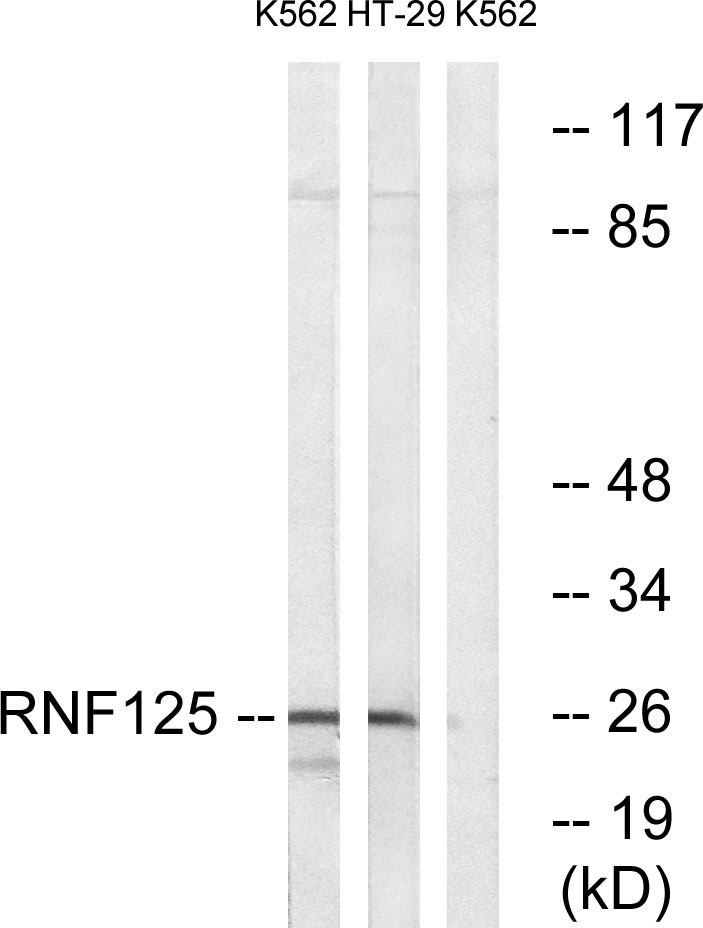产品名称
TRAC-1 Rabbit Polyclonal Antibody
别名
RNF125; E3 ubiquitin-protein ligase RNF125; RING finger protein 125; T-cell RING activation protein 1; TRAC-1
蛋白名称
E3 ubiquitin-protein ligase RNF125
存储缓冲液
Liquid in PBS containing 50% glycerol, 0.5% BSA and 0.02% New type preservative N.
Human Gene Link
http://www.ncbi.nlm.nih.gov/sites/entrez?db=gene&term=54941
Human Swissprot No.
Q96EQ8
Human Swissprot Link
http://www.uniprot.org/uniprotkb/Q96EQ8/entry
Mouse Gene Link
http://www.ncbi.nlm.nih.gov/sites/entrez?db=gene&term=67664
Mouse Swissprot No.
Q9D9R0
Mouse Swissprot Link
http://www.uniprot.org/uniprot/Q9D9R0
免疫原
The antiserum was produced against synthesized peptide derived from human RNF125. AA range:131-180
特异性
TRAC-1 Polyclonal Antibody detects endogenous levels of TRAC-1 protein.
稀释度
WB 1:500 - 1:2000. IHC 1:100 - 1:300. ELISA: 1:10000.. IF 1:50-200
宿主
Polyclonal, Rabbit,IgG
背景介绍
ring finger protein 125(RNF125) Homo sapiens This gene encodes a novel E3 ubiquitin ligase that contains a RING finger domain in the N-terminus and three zinc-binding and one ubiquitin-interacting motif in the C-terminus. As a result of myristoylation, this protein associates with membranes and is primarily localized to intracellular membrane systems. The encoded protein may function as a positive regulator in the T-cell receptor signaling pathway. [provided by RefSeq, Mar 2012],
组织表达
Predominantly expressed in lymphoid tissues, including bone marrow, spleen and thymus. Also weakly expressed in other tissues. Predominant in the CD4(+) and CD8(+) T-cells, suggesting that it is preferentially confined to T-cells.
细胞定位
Golgi apparatus membrane ; Lipid-anchor . Shows a reticular staining pattern within the cell and is probably expressed at other intracellular membranes in addition to the Golgi membrane. Not detected at the plasma membrane. .
信号通路
RIG-I-like receptor;
功能
function:E3 ubiquitin-protein ligase that acts as a positive regulator of T-cell activation. E3 ligase proteins mediate ubiquitination and subsequent proteasomal degradation of target proteins.,pathway:Protein modification; protein ubiquitination.,similarity:Contains 1 RING-type zinc finger.,tissue specificity:Predominantly expressed in lymphoid tissues, including bone marrow, spleen and thymus. Also weakly expressed in other tissues. Predominant in the CD4+ and CD8+ T-cells, suggesting that it is preferentially confined to T-cells.,
纯化
The antibody was affinity-purified from rabbit antiserum by affinity-chromatography using epitope-specific immunogen.

